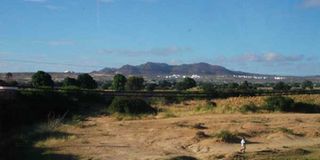Dash to Dodoma

Approaching Dodoma from Morogoro. It’s a beautiful road past sisal fields, baobabs, granite hills, and the Dumila floodplains which get their water from the many hills and water the rice paddies and vast savannah plains. PHOTO/RUPI MANGAT
What you need to know:
- The country bus rolls into Dodoma that’s laid on a flat plain with the bright orange flowers of the Nandi flame in bloom. I have to laugh at this – I’m set with my camera to take pictures of the parliament building which I’ve come to see. “You can’t take pictures of it,” states Sartaj – and because the building is going through a construction phase, l can’t even visit it.
- I’m in for a surprise – the wine list at the hotel is extensive and that’s because Christian missionaries planted the first grapes near Dodoma in the early 1960s – and today a large-scale grape farming and wine industry thrives in the country. I have to toast to that before I leave next morning by bus for Dar.
Back at the country bus stop the bus rolls off for Dodoma.
It’s a beautiful road past sisal fields, baobabs, granite hills, and the Dumila floodplains which get their water from the many hills and water the rice paddies and vast savannah plains.
Sartaj Begum, a lecturer at University of Dodoma, names the villages we’re driving past – Dumila, Magole, Gairo, Kibaigwa and Bande.
Increasingly the land turns dry with more hills in the distance.
In a few minutes, the country bus rolls into Dodoma that’s laid on a flat plain with the bright orange flowers of the Nandi flame in bloom. I have to laugh at this – I’m set with my camera to take pictures of the parliament building which I’ve come to see. “You can’t take pictures of it,” states Sartaj – and because the building is going through a construction phase, l can’t even visit it.
DESOLATE TOWN
My first priority is finding a place for the night – and this time I settle on a place with history instead of a nondescript modern guest-house. It’s New Dodoma Hotel by the railway station.
“It was built by the Germans to receive the Kaiser who was to open the railway line,” says Mehar Singh Virdi who was born in Dodoma in the 1930s. He’s lived all his life here. “But the Germans lost the war (WW1) and the Kaiser never came.”
Dodoma was founded in 1907 by German colonialists when constructing the Tanzanian central railway.
In addition to the New Dodoma Hotel, the Germans built four other hotels for the Kaiser along the 1,300-kilometre Dar to Kigoma line, and Mehar Singh reels off the names: “New Africa Hotel, Morogoro Hotel, Tabora Hotel and Kigoma Hotel. The façade of the hotel is the same since it was built more than a century ago.”
“The hotel was government-owned till 2003,” adds Wellington Maleya, the general manager who is from Kenya. “It was then privatised.” The charming old-world hotel with a beautiful courtyard and a water feature, has been updated to fit the present era.
With the rest of the afternoon at leisure, I cross the road to the century-old railway station.
It looks a little desolate with many train services no longer operating. Walking leisurely along a beautiful pavement, I turn towards the city centre.
It really is quaint. The first major building is the Ismailia Jamat Khana on Jamatini Road – a grand building very European in architecture. “It was built in 1954 and it was the biggest building in Tanzania at that time,” says the Tanzanian Sikh. “It was opened by the Aga Khan.”
A little distance away, at Nyerere Square, the gigantic statue of the Tanzania’s founding father, the respected “Mwalimu” stands tall. Being Sikh, I’m curious how the Tanzanian Sikhs came to settle here. “Unlike Kenya, very few Indians artisans worked on the railway line built by the Germans. Germany lost the country (Tanganyika) during WW1, and the League of Nations handed the country to the British government as a trust territory.
THRIVING INDUSTRY
“And because the British were ruling the Punjab in India, they brought the Sikhs here.
Many Punjabis were employed in the police force and later started wood workshops . The Dodoma gurdwara (Sikh temple) was built by hand in 1928.” The family shows me around town.
On the outskirts is Simba Hill, a cluster of gigantic boulders and a place to climb.
There is the old church and next to it is the Commonwealth cemetery which is similar to the ones we have in Maktau, Taveta and other towns in Kenya.
At the outbreak of the First World War, a relatively small but highly skilled German force under General von Lettow-Vorbeck battled the Commonwealth forces and finally surrendered on 23 November 1918, 12 days after the European armistice.

A church in Dodoma . PHOTO/RUPI MANGAT
I’m in for a surprise – the wine list at the hotel is extensive and that’s because Christian missionaries planted the first grapes near Dodoma in the early 1960s – and today a large-scale grape farming and wine industry thrives in the country.
I have to toast to that before I leave next morning by bus for Dar.
FACT FILE
Dodoma is the administrative capital of Tanzania. It is situated in the centre of the country some 495 kilometres west of Dar es Salaam, on the road via Morogoro. Dodoma is populated by different ethnic groups but the indigenous ethnic groups are the Gogo, Rangi, and Sandawe with a sprinkling of Arab and Indians.
Buses from Ubungo the bus terminal in Dar are easy to catch to almost any town– Shabibi is top-of-the-range – bus fare from Dodoma to Dar is Tsh20,000.
Contact New Dodoma Hotel - www.newdodomahotel.com [email protected]




